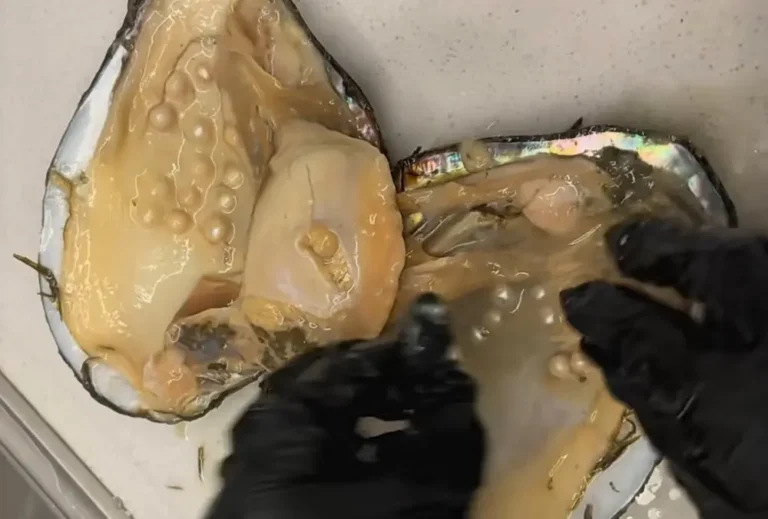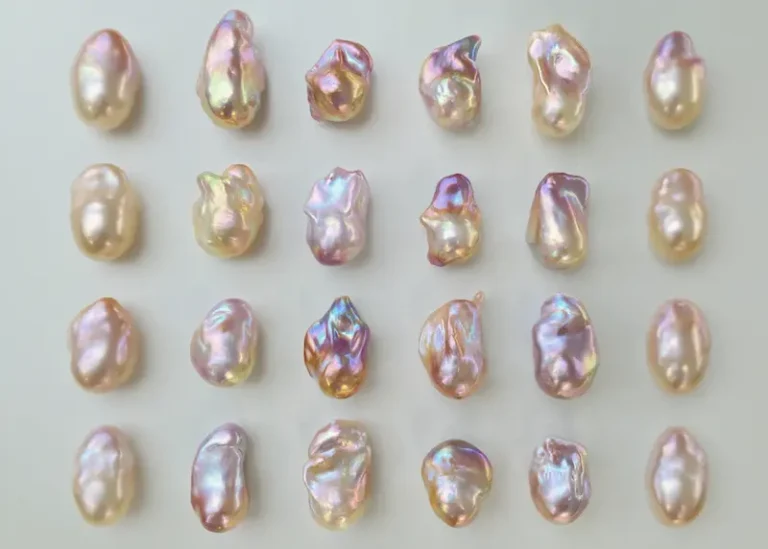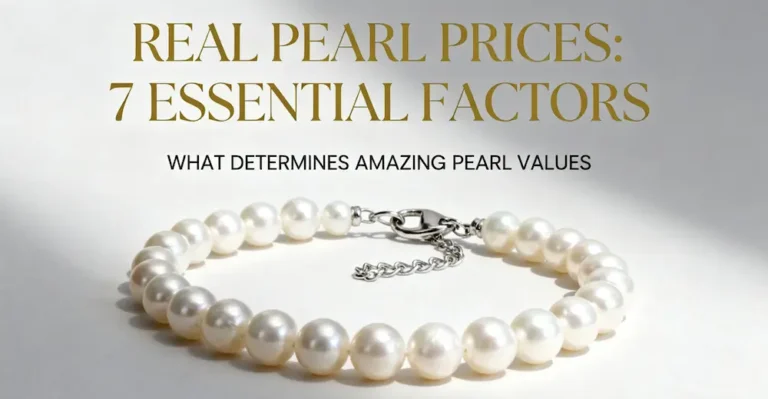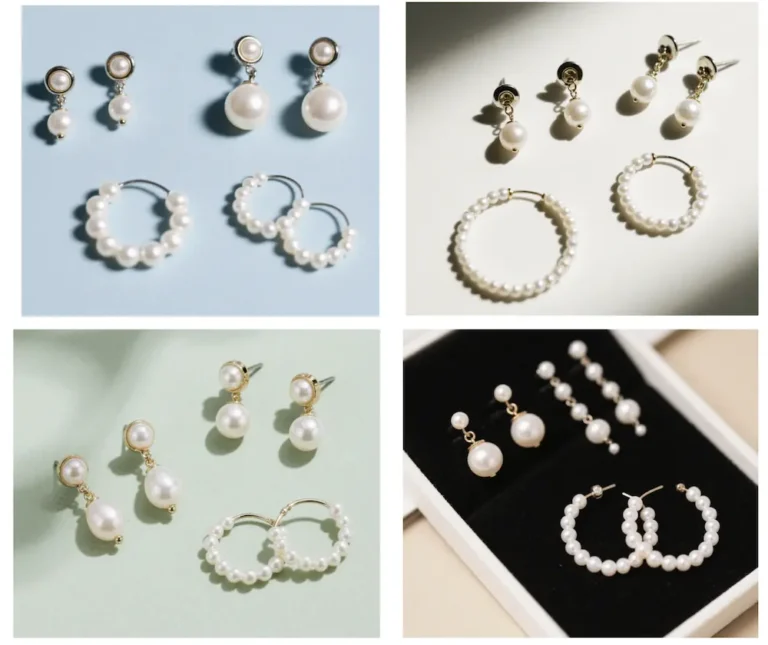The 5 most important factors affecting the price of bulk freshwater pearl wholesale:In the global jewelry market, the wholesale business of bulk freshwater pearls occupies an important position. Its price fluctuations not only affect the interests of many practitioners in the pearl industry chain, but also affect the hearts of consumers.
As a pearl wholesaler, I am very concerned about the factors affecting the wholesale price of bulk freshwater pearls. Therefore, this article will share the five main factors affecting the wholesale price of bulk freshwater pearls, helping you wholesale the pearl products that best meet market demand and make the most rational business decisions.
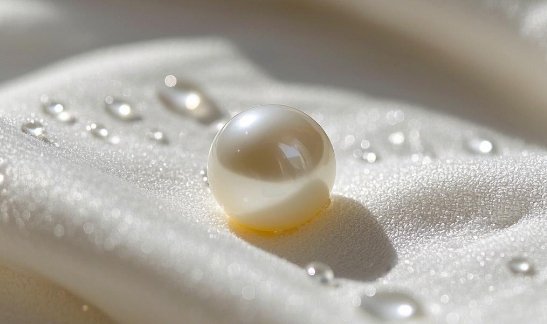
Factor 1 affecting the wholesale price of bulk freshwater pearls: Pearl quality
Bulk freshwater pearl wholesale:The quality of pearls is a decisive factor affecting the wholesale price of bulk freshwater pearls. In the global pearl evaluation standards, luster, shape, size, and degree of defects are all core indicators for measuring pearl quality. Therefore, to judge whether the quality of a bulk freshwater pearl is good or not, you can look at these four aspects.
The first is glossiness. The stronger the gloss, the more dazzling the light reflected from the surface of the pearl, and it will look more textured. Therefore, the price of a freshwater pearl necklace with good gloss will be higher. For example, high-quality Japanese freshwater pearl necklaces usually have a very strong luster. They can bloom charming halos under natural light or under lights. The wholesale price of such necklaces is often more than 50% higher than that of necklaces of the same specifications with ordinary luster.
The second is the shape. The shape to be considered is the roundness of the pearl. Round pearls are the rarest form, and their price is much higher than that of nearly round or irregular pearls. Under the same quality, the wholesale price of a necklace made of round pearls may be about twice that of a nearly round pearl necklace.
In addition, size is also an aspect. Generally speaking, the larger the pearl, the higher the price. Globally, the price of pearls tends to increase exponentially for every 1mm increase in size. This is because large-sized pearls require pearl oysters to spend more energy and time to breed.
Like the popular white freshwater pearl necklaces in the European and American markets, the diameter of daily wear is generally 6-7mm, and the wholesale price is about US$200-300 per piece. For formal occasions, the diameter is generally 8-9mm, and the wholesale price instantly rises to US$600-800 per piece. If the diameter exceeds 10mm, this type of large-size pearl necklace is mostly used for high-end customization, and the wholesale price often exceeds US$2,000.
Finally, the surface flaws of the pearls. The degree of surface flaws cannot be ignored. The fewer surface flaws a pearl necklace has, the higher the price. Because flaws will affect the beauty and overall quality of the pearls. According to statistics, in the international high-end jewelry market, the wholesale price of high-quality pearl necklaces can be as high as US$500 per gram, while the mid- and low-end quality ones are only US$50-150 per gram.
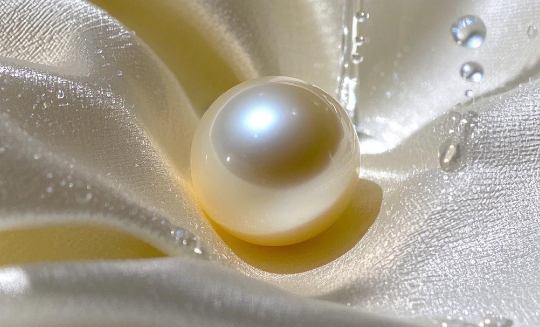
Factor 2 affecting bulk freshwater pearl wholesale: breeding costs
Bulk freshwater pearl wholesale:In addition to the quality of freshwater pearls, breeding costs are also one of the important factors affecting the wholesale price of bulk freshwater pearls. It mainly covers water area rental costs, feed costs, labor costs and other aspects. Changes in these costs directly affect the final wholesale price of pearls.
The first aspect is the water area rental cost. Generally speaking, the better the breeding water area, the higher the rental cost. Similarly, the quality of freshwater pearls is also better. Take Zhuji, Zhejiang, China as an example. It is one of the largest freshwater pearl breeding bases in China. At the same time, the high-quality water resources within its territory are also limited.
According to statistics from the local fishery department, in the core breeding area of Zhuji, the cost of leasing one acre of high-quality water for one year is about US$700-1,100. In some ordinary waters, the rental fee is about US$280-420.
During 2015-2017, due to the intensified protection and regulation of water resources, the area of high-quality water available for pearl breeding decreased, and the water lease price rose by 20%-30%. This directly led to an increase in the cost of pearl breeding, which in turn caused the wholesale price of freshwater pearls produced in the region to rise by 10%-15% during the same period.
The second aspect is the cost of feed. High-quality feed helps to cultivate better pearls, but it also increases the cost of breeding, thereby increasing the wholesale price of pearls. The main feed for pearl oysters includes algae, plankton and some artificial synthetic feed.
In the international market, the price of high-quality algae feed has fluctuated greatly in recent years. For example, from 2018-2020, due to the decline in production in some algae producing areas caused by climate change, the price of high-quality algae feed rose by 30%-40%. In China, many farmers choose high-quality feed to improve the quality of pearls, which increases the proportion of feed costs in the total breeding costs from 20% – 25% to 30% – 35%.
The third aspect is labor costs. As the labor market price rises, the labor costs of pearl cultivation and processing will also increase, which is also one of the important factors affecting the wholesale price of bulk freshwater pearls.
Globally, the labor costs in different regions vary greatly. In Southeast Asia, where labor costs are low, such as Vietnam, the labor costs of pearl cultivation and processing are relatively low, and an ordinary worker earns about $15-20 a day. In Japan, where labor costs are high, a skilled pearl cultivation worker can earn $150-200 a day.
Factor 3 affecting the wholesale of bulk freshwater pearls: market supply and demand
The market supply and demand relationship is a key factor affecting the wholesale price of bulk freshwater pearls. On one side is market demand, and on the other side is market supply, and the two influence each other.
When the market demand for freshwater pearl jewelry is strong, the increase in the purchase of freshwater pearls will lead to an increase in wholesale prices. On the contrary, if the market demand is low, the wholesale price may fall.
In the West, during Christmas and Valentine’s Day, jewelry is a popular gift, and the market demand for freshwater pearl jewelry has risen sharply. According to statistics from the American Jewelers Association, during these two festivals, the purchase volume of freshwater pearl jewelry in the US market increased by 30% – 50% compared with usual.
In addition to some specific festivals, the promotion of fashion trends will also drive the increase in the purchase volume of freshwater pearls. For example, the retro style in recent years. According to French fashion industry data, during the retro style, the demand for freshwater pearl jewelry in the European market increased by 25% – 35%, and the wholesale price also rose by 10% -15%.
The production of freshwater pearls will also directly affect the market supply. If the freshwater pearl harvest is good, the market supply is sufficient and the wholesale price may be reduced. On the contrary, if the production decreases and the supply is insufficient, the price may rise. As the world’s largest freshwater pearl producer, China’s production changes have a huge impact on the global market supply.
In 2016, China’s freshwater pearl production ushered in a bumper harvest due to improved breeding technology and suitable climatic conditions, with production increasing by 20% over the previous year. A large number of freshwater pearls flooded the market, resulting in an oversupply in the global market, and the wholesale price fell by an average of 12% – 18%.
In 2019, the production of some production areas fell by 15% – 20% due to environmental pollution and disease problems. The market supply decreased, and the wholesale price rose by 10% – 15%.
In addition, the promotion of new pearl breeding technology and varieties may also affect market supply and prices. For example, a new type of pearl oyster promoted in Vietnam has increased its freshwater pearl production by 30% in three years. This has increased global market supply and to some extent suppressed the increase in wholesale prices.
Factor 4 affecting the wholesale of bulk freshwater pearls: processing and circulation costs
Processing and circulation costs play an important role in the process of bulk freshwater pearls from farms to the market, and they directly affect the final wholesale price of pearls.
The first is the processing cost. Complex processing technology and high-quality processing requirements will increase processing costs, thereby affecting wholesale prices. According to statistics, the processing cost of each pearl for basic processing procedures such as screening, drilling, and polishing of ordinary freshwater pearls is about 0.2-0.5 US dollars. If you want to make a fine bead design and make a complex pearl necklace, the processing cost will rise to 5-10 US dollars per string.
If you use advanced inlay technology, for example, inlay freshwater pearls on 18K gold or diamond-studded bases to make high-end jewelry. The cost of inlay alone may reach 50-100 US dollars, so the wholesale price of finely inlaid freshwater pearl jewelry is 50%-100% higher than that of ordinary processed pearl jewelry.
Another is the circulation cost, including the cost of transportation, warehousing, packaging, marketing and other links. For example, a large batch of freshwater pearls shipped from China to the United States. If shipped by sea, the transportation cost of a standard container is about 3,000-5,000 US dollars, which does not include port loading and unloading, customs declaration and other costs. If air transport is used, the transportation cost will increase significantly, and the transportation cost per kilogram can reach 50-80 US dollars.
In terms of storage, freshwater pearls need to be stored in a constant temperature and humidity environment to prevent the pearls from deteriorating. In a professional jewelry storage center in New York, the monthly cost of storing one kilogram of freshwater pearls is about 10-20 US dollars.
The packaging cost cannot be ignored either. Ordinary pearl jewelry is packaged in simple paper boxes, each costing about 0.1-0.3 US dollars. High-end pearl jewelry uses customized wooden gift boxes lined with high-grade silk, and the packaging cost can reach 5-10 US dollars each.
The marketing cost varies greatly. Small pearl wholesalers may only conduct simple promotion in the local market, with an annual marketing investment of about 5,000-10,000 US dollars. Internationally renowned jewelry brands, such as Tiffany, spend millions of dollars on advertising and other aspects to promote their freshwater pearl series products.
These high circulation costs are accumulated layer by layer, causing the wholesale price of bulk freshwater pearls to rise significantly.
Factors affecting wholesale of bulk freshwater pearls: brand and reputation
In the bulk freshwater pearl market, brand and reputation are two important cornerstones, which have an unignorable impact on wholesale prices.
The brand carries the image and value of the product. For example, Maison Dior in France. After entering the field of pearl jewelry, it quickly occupied a place in the pearl market with its deep heritage in the fashion industry and strong brand influence. Dior incorporates its unique fashion concept into the design of freshwater pearl jewelry, adopts a bold and novel design style, and matches high-quality freshwater pearls to create highly personalized products.
Market data shows that the wholesale price of Dior’s freshwater pearl jewelry is 30% – 50% higher than that of similar products from ordinary brands. The wholesale price of a fashion ring inlaid with freshwater pearls from an ordinary brand is about US$150 – 250, while the wholesale price of the same ring from Dior can reach US$300 – 400.
Reputation is the guarantee for the smooth conduct of transactions. Suppliers with good reputation are more trusted by wholesalers in the market, and they are often able to provide more stable product quality and more reliable services. In Zhuji, Zhejiang, China, there is a supplier called “Pearl Source”. With the good reputation accumulated in the industry over the years, it has become the preferred partner of many domestic and foreign wholesalers.
The supplier has its own large-scale breeding base, controls the quality of pearls from the source, strictly follows the scientific breeding process, and ensures the stable quality of the freshwater pearls produced. In the supply link, no matter how big or small the order is, it can be delivered on time and in quantity, and a detailed product quality inspection report is provided.
Bulk freshwater pearl wholesale:In terms of after-sales service, for products with quality problems, unconditional returns and exchanges are promised. According to the survey, more than 85% of wholesalers who cooperate with “Pearl Source” expressed their willingness to accept its wholesale price that is 10% – 15% higher than that of ordinary suppliers. Because cooperating with them can not only guarantee product quality, but also reduce economic losses and customer loss risks caused by quality problems.
Conclusion
Bulk freshwater pearl wholesale:The above is the business intelligence about bulk freshwater pearl wholesale: 5 main factors affecting the wholesale price of bulk freshwater pearls.
The above factors interact with each other and jointly affect the wholesale price of bulk freshwater pearls. Therefore, wholesalers need to consider these factors comprehensively when purchasing and make reasonable decisions based on their own needs and market conditions.

